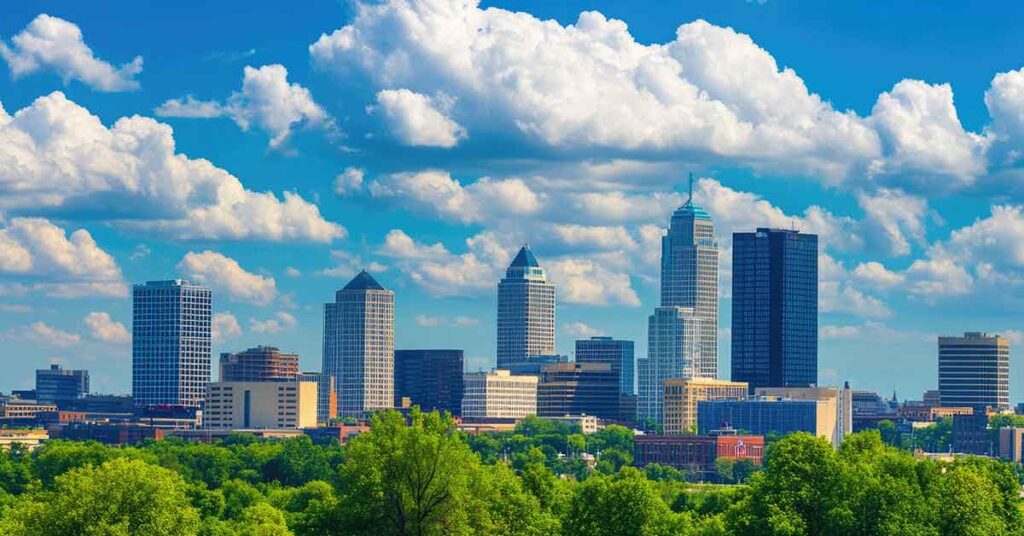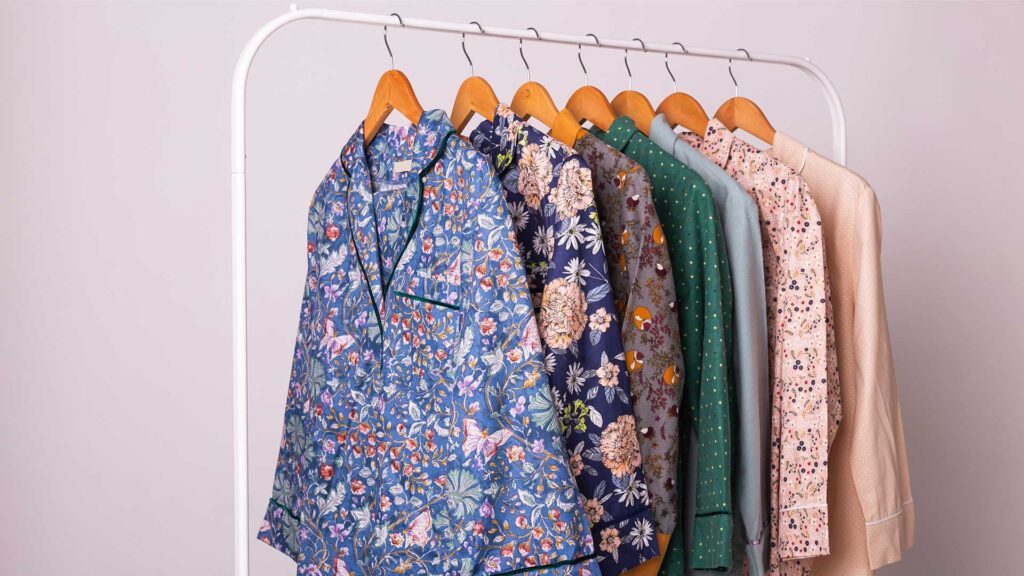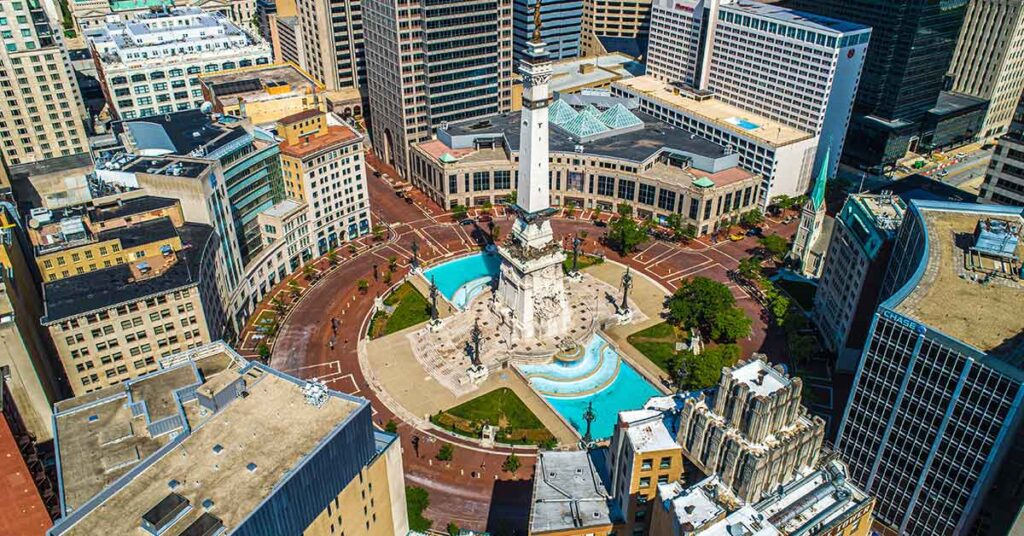
51 hidden gems located outside of Indianapolis
Here’s a curated list of 51 hidden gems located just outside of Indianapolis that are perfect for exploration.

When preparing for a video production shoot, what you wear plays a critical role in ensuring the best results. Certain wardrobe choices can cause distractions, technical issues, or even distort how the video looks. Here’s a list of what not to wear on a video production shoot:
Fine patterns: Small, intricate patterns (like pinstripes, herringbone, or tight checks) can cause a visual distortion called “moiré” on camera. This creates a wavy, flickering effect that distracts from the content.
Bold patterns: Large, busy patterns (such as floral or geometric designs) can be visually overwhelming and take focus away from the subject. They may also clash with the background or set design.

Metallics and sequins: Reflective fabrics like metallics, sequins, or anything with a high sheen can cause light to bounce off and create glare, making it difficult to capture a clean image.
Glossy accessories: Avoid shiny jewelry or accessories that could reflect lights or create unnecessary reflections on camera.
White clothing: Pure white can be problematic because it reflects a lot of light, potentially causing the exposure to blow out, making it harder for the camera to balance skin tones properly.
Black clothing: Black can have the opposite effect, absorbing too much light, especially in poorly lit conditions, and may lose detail in shadows. It also lacks contrast, making the subject look flat.
Better alternatives: Instead of bright white or black, opt for softer tones like light gray, cream, navy, or earth tones, which balance well on camera.
Unflattering shapes: Clothes that are too loose can look unstructured or shapeless on camera, making it difficult for viewers to see your form or movements. This can make your appearance less professional or polished.
Distractions in movement: Loose clothing tends to move excessively, potentially becoming a distraction as it sways or folds during the shoot.
Oversaturation: Neon colors or overly bright hues can appear too saturated on camera, making them look unnatural or harsh. Bright colors can also interfere with lighting setups and reflect unwanted colors onto the face.
Color balance issues: Neon or overly vibrant colors may confuse the camera’s white balance settings, leading to an unbalanced color palette in the final video.
Chroma key (green screen): If you’re shooting in front of a green screen, never wear green or anything close to the shade of the screen. The green will be keyed out and make you appear invisible in that part of the video.
Match the set colors: Avoid wearing colors that blend too closely with the background or set. For example, if the backdrop is gray, don’t wear gray clothing, as this could make you look like part of the background.
Dangling jewelry: Large, dangling earrings, necklaces, or bracelets can cause noise if they move around during the shoot, especially if they hit microphones or make distracting sounds on set.
Bulky accessories: Avoid overly flashy or bulky accessories that can steal attention away from the subject. Simple, minimalistic pieces are a safer choice.
Avoid logos: Clothing with logos, brand names, or slogans can be distracting and may not align with the video’s message or brand. It can also cause legal issues if you’re featuring logos without permission.
No text-heavy designs: Shirts or jackets with large amounts of text can be hard to read and take away from the overall professionalism of the video.
See-through problems: Sheer fabrics can become unintentionally revealing under bright studio lights, leading to awkward moments on set or uncomfortable results in the final video.
Light exposure issues: Even fabrics that don’t look sheer in natural light can become problematic under bright production lights, especially around areas like sleeves or hems.
Restricting movement: Don’t wear anything too tight or uncomfortable that restricts movement or makes it hard to sit or stand naturally. If you feel uncomfortable, it will show on camera.
Awkward adjustments: Avoid outfits that require constant adjustment. For instance, an outfit that slides off the shoulders or has awkward straps can lead to distractions and take time away from the shoot.
Stiff or creased clothing: New clothes can often look stiff or have noticeable creases that may not come across well on camera. It’s best to wear outfits that are comfortable and have been broken in.
Potential malfunctions: Wearing something new that you haven’t tested could lead to wardrobe malfunctions or discomfort, affecting your performance.
Avoid overly shiny makeup: Shiny or oily makeup can reflect studio lights, making your face look greasy or sweaty on camera. Opt for matte makeup products to reduce shine.
Hair distractions: Make sure your hair is styled in a way that won’t require constant fixing or attention. Avoid hairstyles that cover your face or constantly fall out of place.
When dressing for a video production shoot, the goal is to look polished without distracting from the content. Stick with solid colors, avoid patterns and reflective materials, and choose outfits that are comfortable, well-fitting, and appropriate for the background and lighting conditions. This ensures that the focus remains on your message, not your wardrobe.
Explore more insights on videography on our blog! Dive into valuable content at Sergi Studios Blogs.

Here’s a curated list of 51 hidden gems located just outside of Indianapolis that are perfect for exploration.

Here are some tips on how to use video production to market on TikTok:

Corporate video production involves creating video content commissioned by a business or organization.

Promoting your business with video in Indianapolis, Indiana can be highly effective given the city’s dynamic and diverse market.

In today’s digital age, businesses are constantly seeking innovative ways to capture the attention of their target audience and stand out from the competition.

Promoting your business with video in 2025 will continue to be a powerful way to engage audiences and expand your reach.